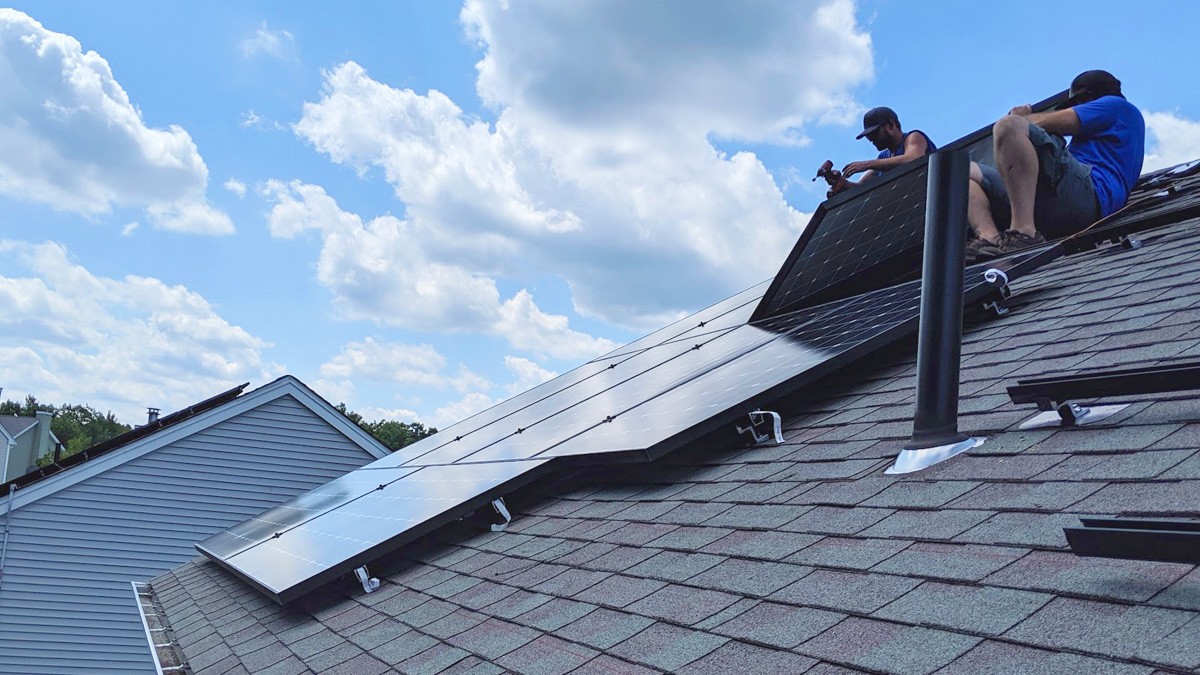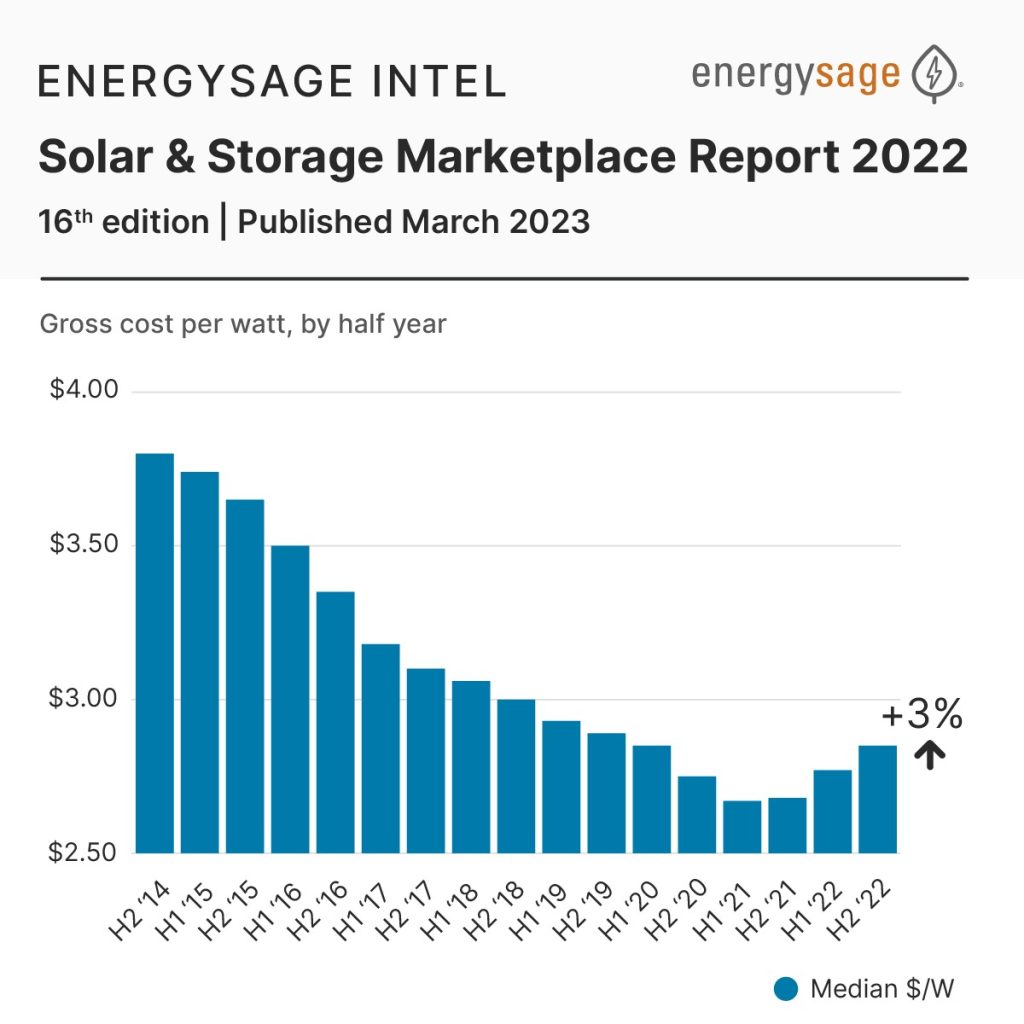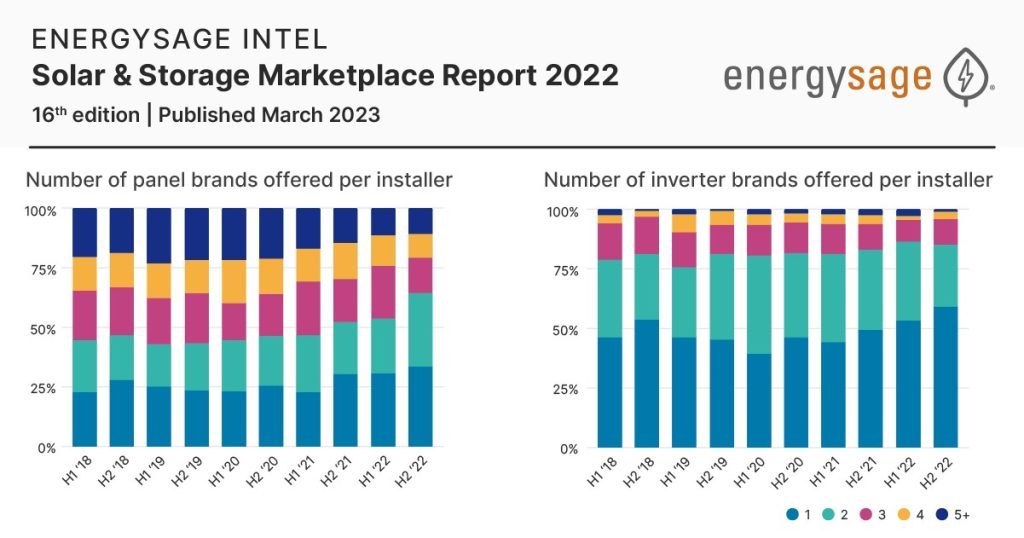
Here are three standout rooftop solar trends that emerged in 2022 – and how they impact consumers who want to switch to clean energy.
Rooftop solar trends in 2022
EnergySage has just released its 16th Solar & Storage Marketplace Report, and the online comparison solar and storage shopping marketplace shared it with Electrek for an exclusive first look.
Its calendar year 2022 report – which can be downloaded for free – looks at trends in rooftop solar pricing, equipment, marketplace share, and financing. The report draws from millions of transaction-level data points generated by quotes sent to homeowners in 2022 from solar companies in 41 states and Washington, D.C.
Below are three key insights that EnergySage identified in this new report. Electrek spoke with Spencer Fields, head of insights at EnergySage, and one of the report’s authors, about what those three takeaways mean for consumers going forward.
Solar prices rose over 6% year-over-year

Ongoing equipment supply constraints continue to impact pricing, as the quoted price of solar on EnergySage has increased to $2.85 per watt, a 6.7% increase since the lowest price in early 2021. The installed cost of energy storage is also up, increasing by $50 per kWh stored, or 3.9%, in 2022.
Spencer Fields’ Take: The solar market was affected by inflation like many other consumer goods were in 2022. Equipment supply constraints are certainly affecting the market, and that impacts the availability of raw materials or assembled products that are installed on a consumer’s home. Not only was it harder to get supply, but it also took longer to do so. So that contributed to the price of solar in 2022.
But on the positive side, solar prices increased at a slower pace than other consumer goods, and particularly electricity. Plus, the Inflation Reduction Act was enacted, which bumped the tax credit up to 30%, so it mitigates the inflation rate.
All of this highlights the importance of shopping around for rooftop solar. It’s important that consumers get at least three quotes to get the best price from a vendor they trust.
Residential market-share shifts for solar panel brands

In the second half of 2022, Qcells overtook REC as the most frequently quoted panel brand on EnergySage, with more than 25% of all quotes including Qcells panels. Additionally, as installers looked to secure their supply during shortages in 2022, the share of quotes represented by the top three brands on EnergySage continued to drop – from 66% in 2021 to 58% in 2022. Enphase remained the most quoted inverter and battery storage brand. (Editor’s note: Enphase is based in California, and its inverters are made in Mexico.)
Spencer Fields’ Take: A big part of the push of the Inflation Reduction Act, as well as tariffs on solar panels manufactured abroad, is to bring more manufacturing to the US. Qcells has a huge manufacturing expansion going on in Georgia, and it began the process of building out manufacturing capacity a few years ago, so they’re producing US-made solar panels.
Consumers are more aware of where their products are being made. Qcells is the player with the largest market share in the US. It has a robust supply chain in the US.
Installer brand loyalty continues to increase

In the second half of 2022, 59% of installers offered only a single inverter brand, the highest level of brand loyalty since EnergySage began tracking this information in 2014. Similarly, over one-third of installers only worked with a single solar panel brand in the second half of 2022, the highest level since 2015.
Spencer Fields’ Take: This finding belies the importance of getting multiple quotes since companies are working with single brands. That way consumers have access to multiple brands. One thing that’s unique to the solar industry is that most manufacturers are not household names – it’s not like makes of cars. So that makes it much more incumbent on the homeowners to do that little bit of extra research.
Consumers may be less likely to find installers with multiple packages. When it comes to inverters, for example, installers may be very familiar with that particular technology. So it should give consumers confidence that the installer is choosing to work closely with an individual brand and that consumers are paying appropriately for higher-quality equipment.
Read more: Here’s why US-made solar panels would slash emissions by 33%
Photo: EnergySage
FTC: We use income earning auto affiliate links. More.




Comments